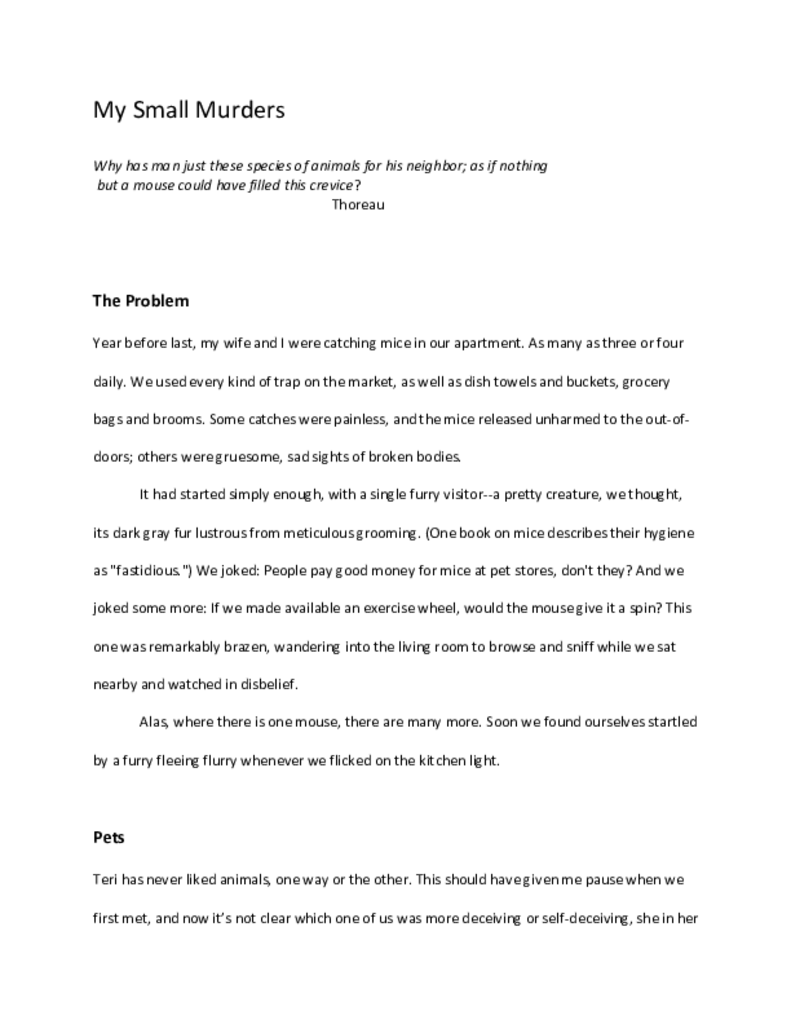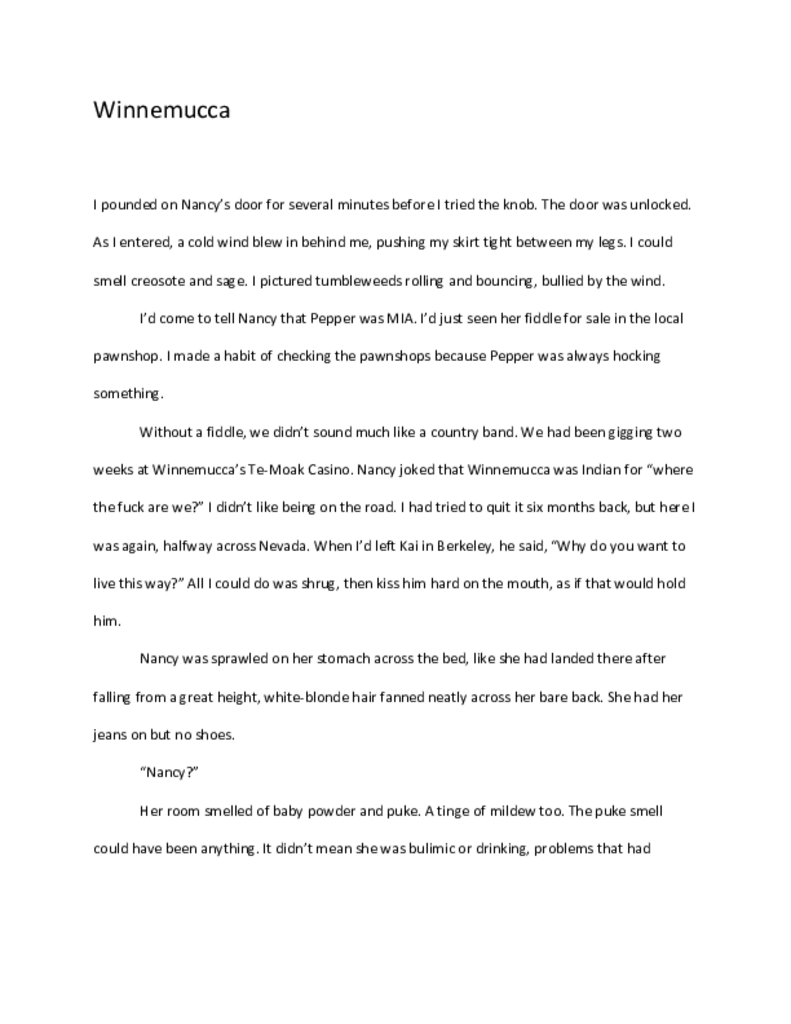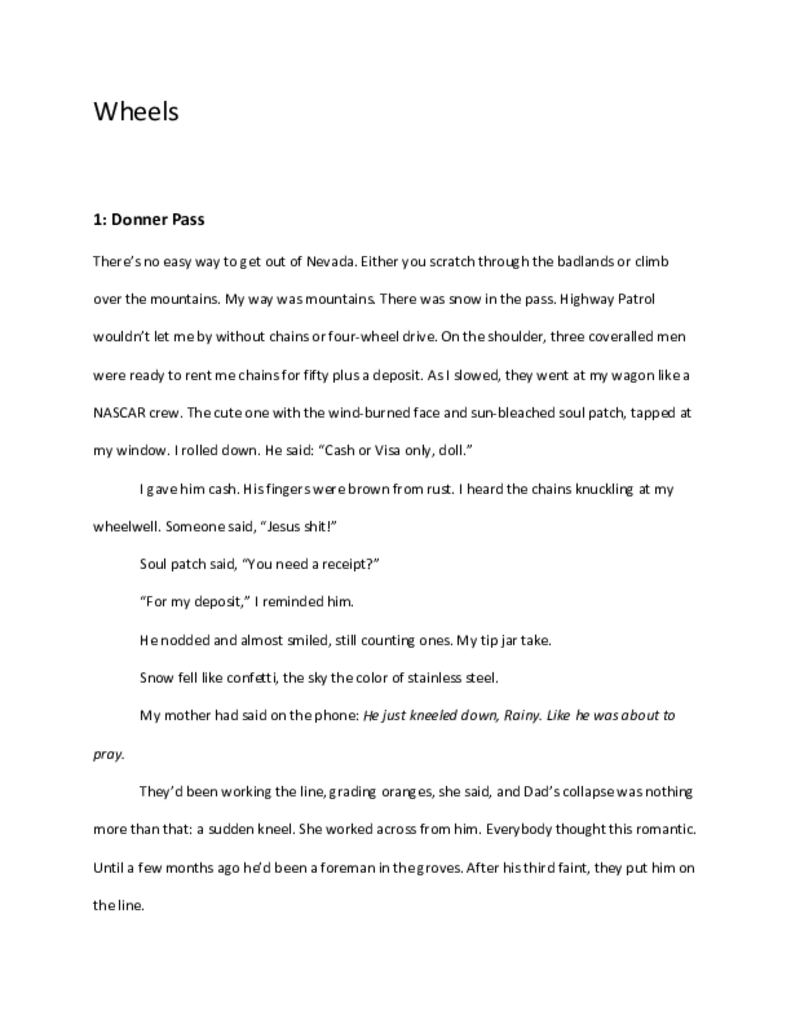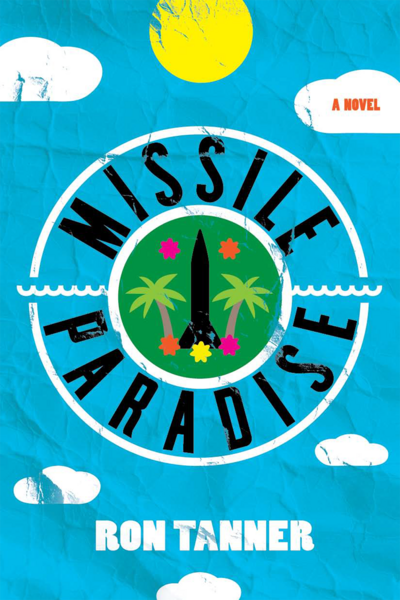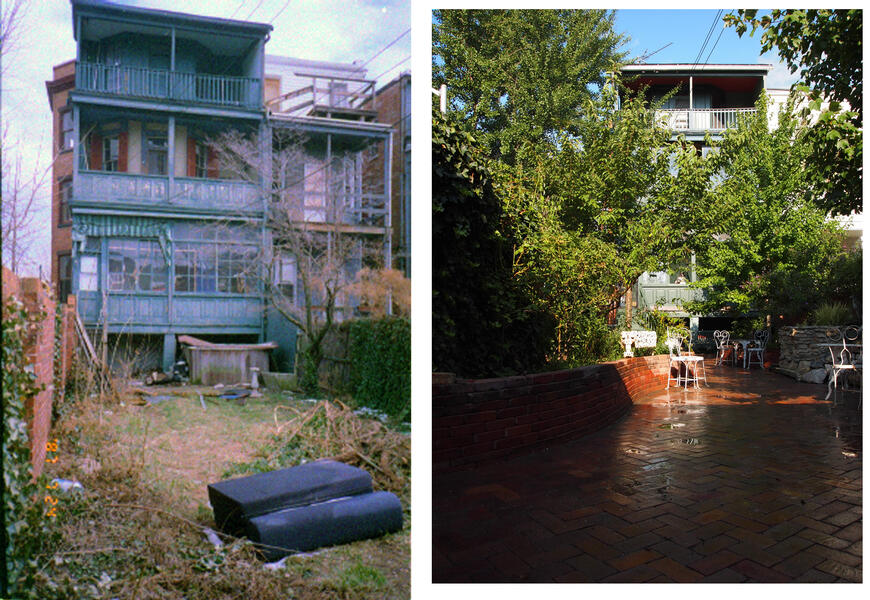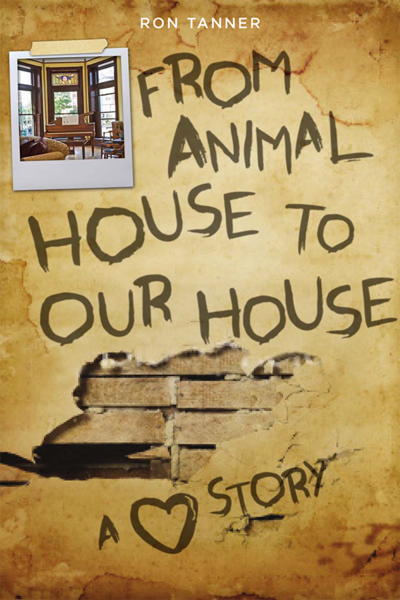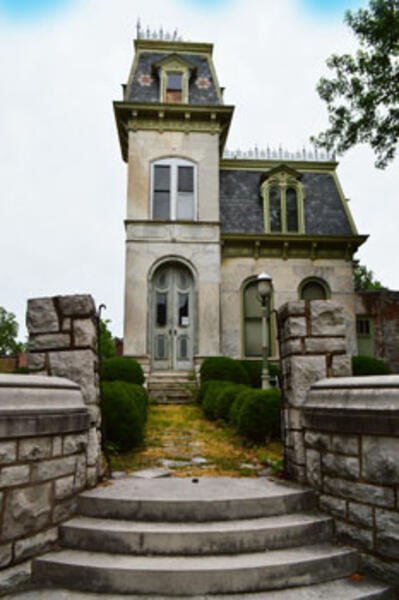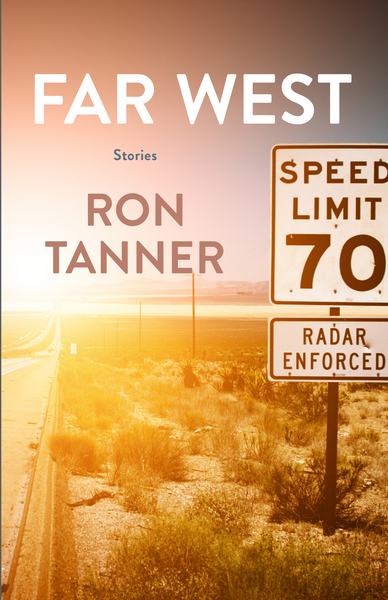Work samples
-
Winnemucca.pdf
"Winnemucca" is the first chapter of my novel-in-progress, "A Brief History of My Broken Heart," about a young woman trying to make a living as a working musician. In keeping with my project (the effect of place), the novel unfolds in the casino circuit of Nevada, where the landscape amplifies an individual's longing, isolation, and ambition.
About ron
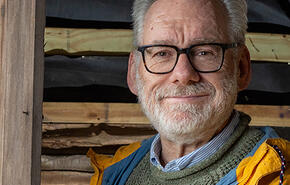
In both fiction and non-fiction, my theme is that place matters. My explorations of place--and how it affects individuals and communities--range from my living and working with the Marshalese in Micronesia and my restoration of a wrecked former fraternity house in Baltimore.
My novel, Missile Paradise, examines the American presence in the mid-Pacific island nation of the Marshall Islands, where the U.S. Army has established an anti-ballistic missile test site. My… more
Marshall Islands Story Project
I lived in the Marshall Islands as a teenager, then later worked there briefly; and, since that time, I had wondered how I might help the young people of that island nation. I finally came up with an idea, which is described as follows: "The Marshall Islands Story Project started in 2007 with a grant written by Dr. Ron Tanner, of Loyola University-Maryland, who returned to Majuro, the capital island, in 2007 to establish an educational partnership with the College of the Marshall Islands. He proposed a project to help teach Marshallese college students how to gather and archive stories from their elders. Integral to the project was the students' practice of communication skills. Specifically, the project called for them to build a website to house the stories they collected. The hope was that this undertaking--the combination of gathering/translating stories and broadcasting them--would motivate the youth of the Marshall Islands to sustain the preservation of their oral culture."
The U.S. Park Service funded the project, the likes of which had never been tried. Happily, it was incredibly successful, as these young men and women engaged themselves with new technology to preserve their precious, fast-disappearing oral culture--tales of the islands origins, myths of demi-gods, demons, and saviors, and fundamental life lessons. This work is ongoing and informs much of what I write about to this day.
Website: https://www.mistories.org/about.php
-
 Marshall Island Story Project
Marshall Island Story ProjectThe Marshall Islands Story Project started in 2007 with a grant written by Dr. Ron Tanner, of Loyola University-Maryland. Dr. Tanner lived in the Marshalls as a teenager and later visited the islands and wrote about them. He returned to Majuro, the capital island, in 2007 to establish an educational partnership with the College of the Marshall Islands. He proposed a project to help teach Marshallese college students how to gather and archive stories from their elders. Intregral to the project was the students' practice of communication skills. Specifically, the project called for them to build a website to house the stories they collected. The hope was that this undertaking--the combination of gathering/translating stories and broadcasting them--would motivate the youth of the Marshall Islands to sustain the preservation of their oral culture.
-
 Student teaching the young--the first time many have seen a computer.
Student teaching the young--the first time many have seen a computer. -
 seeing the world through a new portal
seeing the world through a new portal -
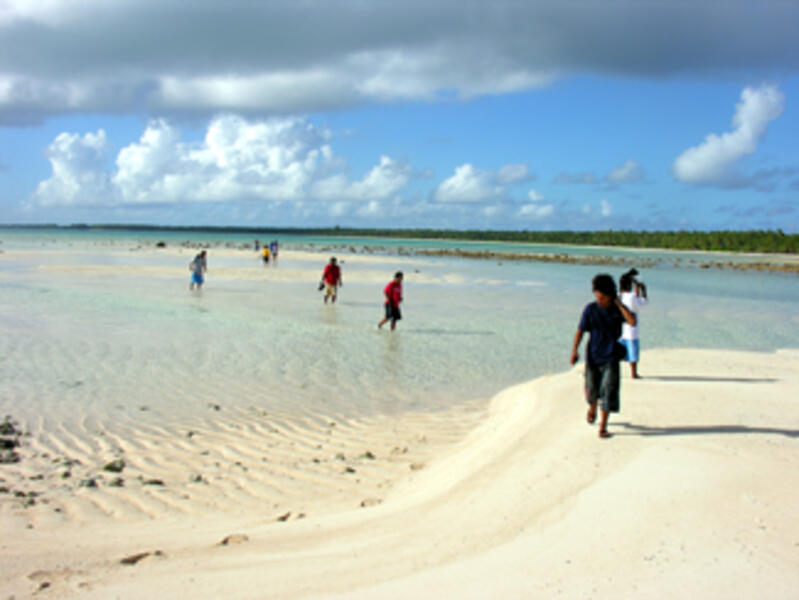 One of our many field trips to legendary cultural sites
One of our many field trips to legendary cultural sites -
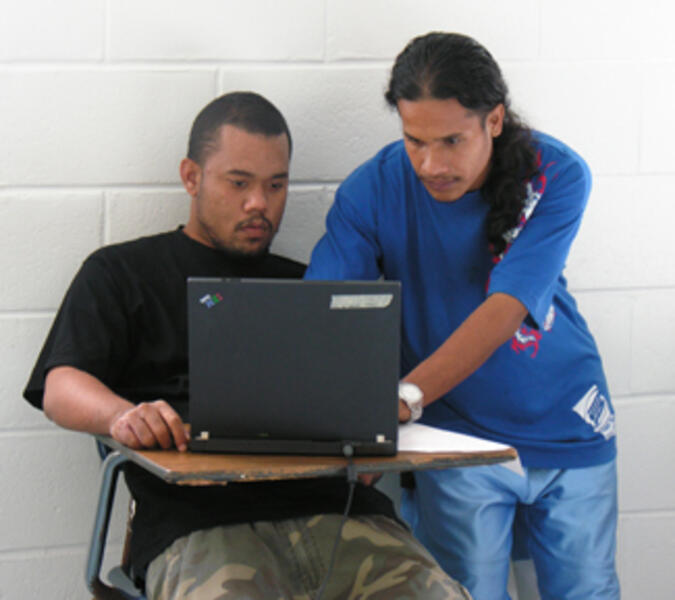 Jeff helping Decency with his website
Jeff helping Decency with his website -
 graduation
graduation
Missile Paradise
Tanner’s high-adrenaline, piquantly funny, bad-to-worse novel is set in the Marshall Islands, where the U.S. detonated 67 nuclear bombs between 1946 and 1958, subjecting the Marshallese to the unending consequences of nuclear fallout. It’s 2004 at the start of this tale of cultural dissonance, hubris, anger, loss, and resiliency, and Cooper, a talented video-game programmer, is about to join a missile-defense group on the island of Kwajalein, a military stronghold on which Marshallese are not allowed after dark. But he has a freak accident after sailing alone across the Pacific from California, following a rift with his fiancée, and begins his stay on Kwajalein in rehab after losing a leg. A bizarre diving mishap has left Alison widowed with two young sons. Jeton, an impulsive Marshallese teenager jilted by his American girlfriend, propels himself into deep trouble. And Art, the flinty cultural liaison, fights discrimination against the Marshellese. In this poisoned island paradise besieged by poverty, disease, and rising sea levels precipitated by global warming, each irresistibly self-embattled character makes grievous mistakes, suffers from regret, and plunges into disaster. Tanner (From Animal House to Our House, 2012), who lived in the Marshall Islands and launched the Marshall Islands Story Project, brings this microcosm of human folly and valor to captivating realization with bracing insights, tangy humor, profound respect, and rebounding resonance.
From Animal House to Our House: A Love Story
In the fall of 1999, my then-girlfriend and I discovered the house of our dreams: a landmark Victorian row house that had belonged to a notorious fraternity in Baltimore. Unfortunately, it was now a condemned, abandoned property. But Jill wanted the house and I wanted Jill. So I bought the 4,500-square-foot ruin, despite the fact that neither of us knew anything about home renovation, and that the project might ruin us both financially and emotionally.
The bank gave us six months to get the house up to code. The neighborhood historians told us flatly, “You’ll never bring that house back.” My realtor said, “This house will eat you alive.” Impulsive and quixotic—and with two marriages behind me—I inspired little confidence. My life seemed a series of mistakes and wrong turns, and I feared that taking on this wrecked frat house could be the biggest mistake of my life. Learning as we went, Jill and I were often at odds when working on the house, and there never seemed to be enough time, even after spending every spare moment possible restoring it. Panicked, flirting with bankruptcy, and barreling through disasters, could we learn how to live, love, and work together?
A book for lovers, dreamers, do-it-yourselfers, and fans of old houses, From Animal House to Our House: A Love Story recounts our decade-long adventure in house restoration, offering inspiration, insight, and hilarity as we hammered away at the American dream of home ownership and true love.
Preservation America Project
In keeping with my passionate interest in "place"--how and why place informs who we are and what we do--I established the Preservation America project, dedicated to documenting the state of preservation in America today. It is comprised of video interviews of preservationists at every level, from national organizations to private homeowners. It includes also, essays I write about
My ultimate aim is to advocate for greater public awareness of local, regional, and national preservation initiatives in the hope that more Americans will support and involve themselves in efforts to save and celebrate their diverse, architectural heritage.
The compilation and posting of interviews on this site are ongoing -- which is to say that the project is open-ended and without deadline.
Website: https://preservationamerica.org/
